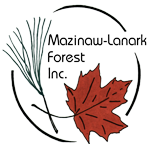Silvicultural Effectiveness Monitoring (SEM)
Silviculture effectiveness monitoring (SEM) is a program used to determine the results of management activities and analyses the causes of success or failure.
- The program consists of formal assessment of forest sites performed certain time after disturbance (known as Free-To-Grow [FTG] assessments) as well as frequent site visits with or without data collection to track the development and treatment needs before the final assessment.
- The post-assessment analysis compares the results with the objective set for each harvest site in the Forest Operations Prescriptions [FOP]. This analysis is the backbone of our adaptive management process.
- Assessments are conducted on both planned harvest sites and sites affected by major events of natural disturbance, such as wind damage.
- Aside from being a logical forest management activity, SEM is also mandatory as described in the Silvicultural Effectiveness Monitoring Manual for Ontario (2001).
- SEM data is used for many purposes:
> Understanding trends, improving silvicultural decisions and their implementation process.
> Determining site-specific treatment needs.
> Updating Forest Resources Inventory for future planning and modelling.
> Feedback to strategic planning and financial support decisions.
> Reporting to the Ontario Government [AR]. - SEM assessments are carried out typically 10 years after harvest or other disturbance but the timing varies between 3 and 15 years depending on harvest type and objective.
- We normally do not conduct SEM assessments on treatment sites where regeneration is not the primary objective, such as commercial thinning, preparatory shelterwood or selection cut, however, a sample of these treatments is included in our program every year to complement the adaptive management loop.
- Even-aged stands (shelterwood, clearcut) are assessed for Free-To-Grow [FTG] standards by determining if the desired regeneration, judged to be essentially healthy and free from competing vegetation, met the minimum stocking and height, as specified in the silvicultural ground rules [SGR].
- Uneven-aged (Selection) stands are assessed for management standards by determining if the basal are, species composition, stand structure and quality met the standards specified in the silvicultural ground rules [SGR].
- The assessment methodology is evolving. The currently used system is known as “SO_iSTARS” - Site Occupancy Index (SOI) & Silvicultural Treatment Assessment & Reporting. This methodology allows for evaluation of the status of multi-sized regeneration of various species based on data collected in clusters of variable size plots.
What are we learning so far?
- Over the last 12 years, from the inception of the current SEM process, 84% of the assessed area has been declared as FTG, of which about 65% were “on target”. i.e. consistent with the objective set prior to harvest. The remaining 16%, while retaining viable forest cover, falls in various categories that did not warrant formal FTG designation, including areas where regeneration needed more time to reach the standards, areas that were omitted from harvest or otherwise not qualified for assessment or areas where the understorey was dominated by less desirable regeneration, such as ironwood or balsam fir.
- Success rate of highly stocked regeneration of red oak and hemlock is below expectation, however, both these species are regularly encountered as a dispersed component of regeneration on a variety of sites being assessed. We believe that for oak this trend represents the return to more traditional pattern of occurrence after changed by massive fires a century ago.
- Ironwood developing in the understorey of oak stands, tolerant hardwood and some other forest stands, including pine, proves to be the most persistent and prolific competitor species with particularly detrimental impact on oak regeneration. Other competitors of major significance include balsam fir, red maple, poplar and blackberries.
- Heavy pressure from high population of browsing wildlife, particularly deer and moose, results in significant losses in regenerating hemlock, oak, yellow birch, pine and sugar maple. The observed damage is widespread but the full extent of its impact has not been quantified. Occasionally browsing on poplar and red maple may produce beneficial results by reducing initial suppression of crop species such as white pine and red pine.
- White ash is recorded as a common and healthy component of regeneration in the openings on hardwood sites. Emerald Ash Borer has not yet been found in the core part of the Mazinaw-Lanark Forest but remains a looming threat to all species of ash.
- Evidence of Beech Bark Disease of various severity, observed and recorded on many sites throughout the forest, raises concern.
- Spatial and structural pattern of regeneration in Mazinaw-Lanark Forest is highly heterogonous and patchy. Factors contributing to this pattern include: naturally high diversity of site mosaic, high deer population, lack of market for small size, low value wood material and high cost of silviculture.
- Forest diversity represents significant management challenges but also ensures ecosystem resilience and adaptability.
